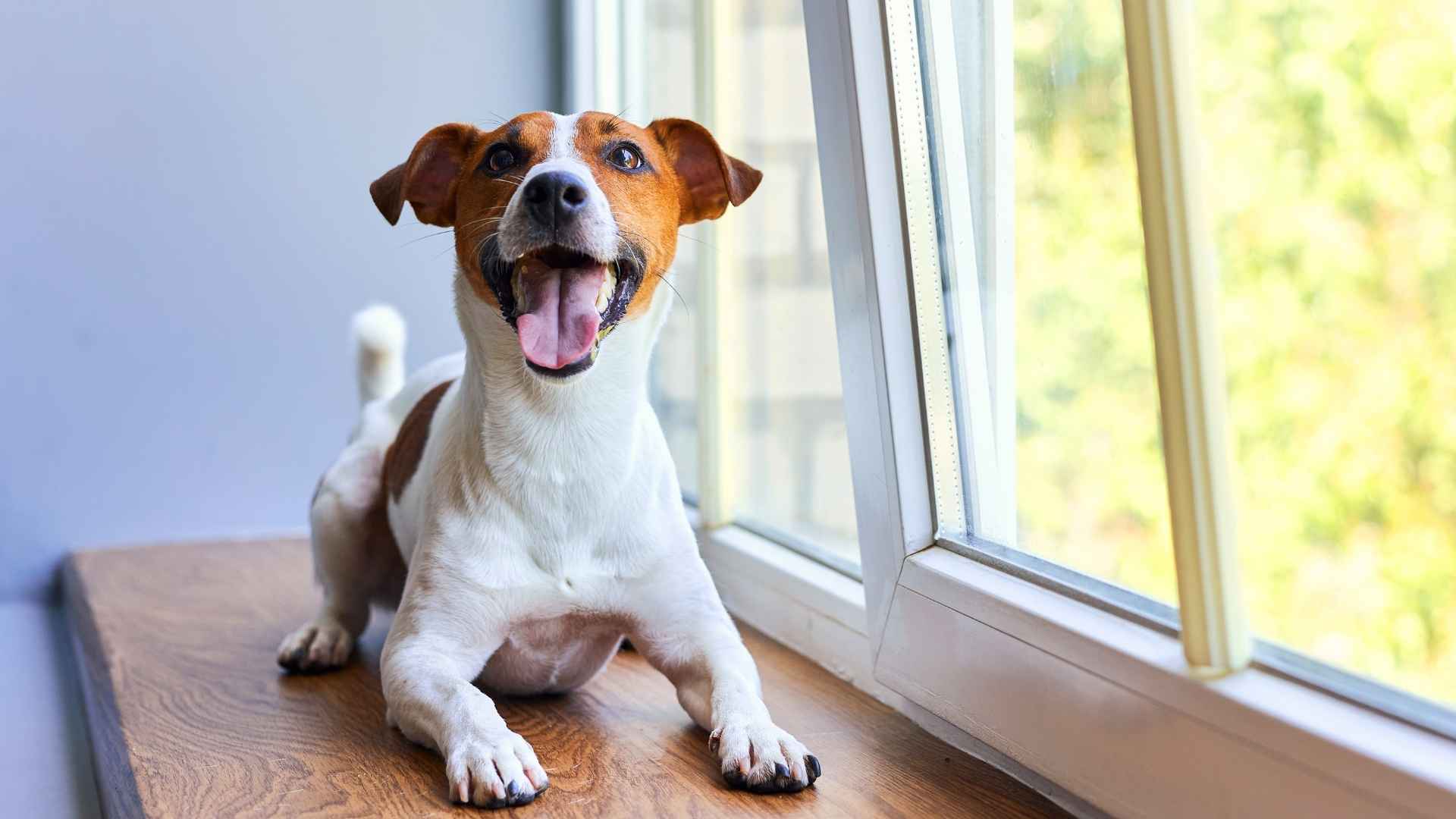You don’t always need a security system to know someone’s at the door — sometimes, a well-tuned bark does the job first. Dogs have long played the role of guardians at home, not just through physical presence, but through their heightened senses and strong territorial instincts. Some dogs naturally alert their families the moment a visitor steps onto the property, long before the doorbell rings.
This instinct can be particularly reassuring for families with children, individuals living alone, or anyone who simply values an early heads-up. It’s not about aggression — it’s about awareness, loyalty, and a genuine desire to protect. These dogs tend to form strong bonds with their people, often making them more attentive to subtle changes around the home.
If you’re looking for a companion that’s not only affectionate but also quick to sound the alarm, you’ll appreciate the alert, reliable nature of these vigilant pets.
Dog Breeds That Bark Before Visitors Reach Houses
1. German Shepherd
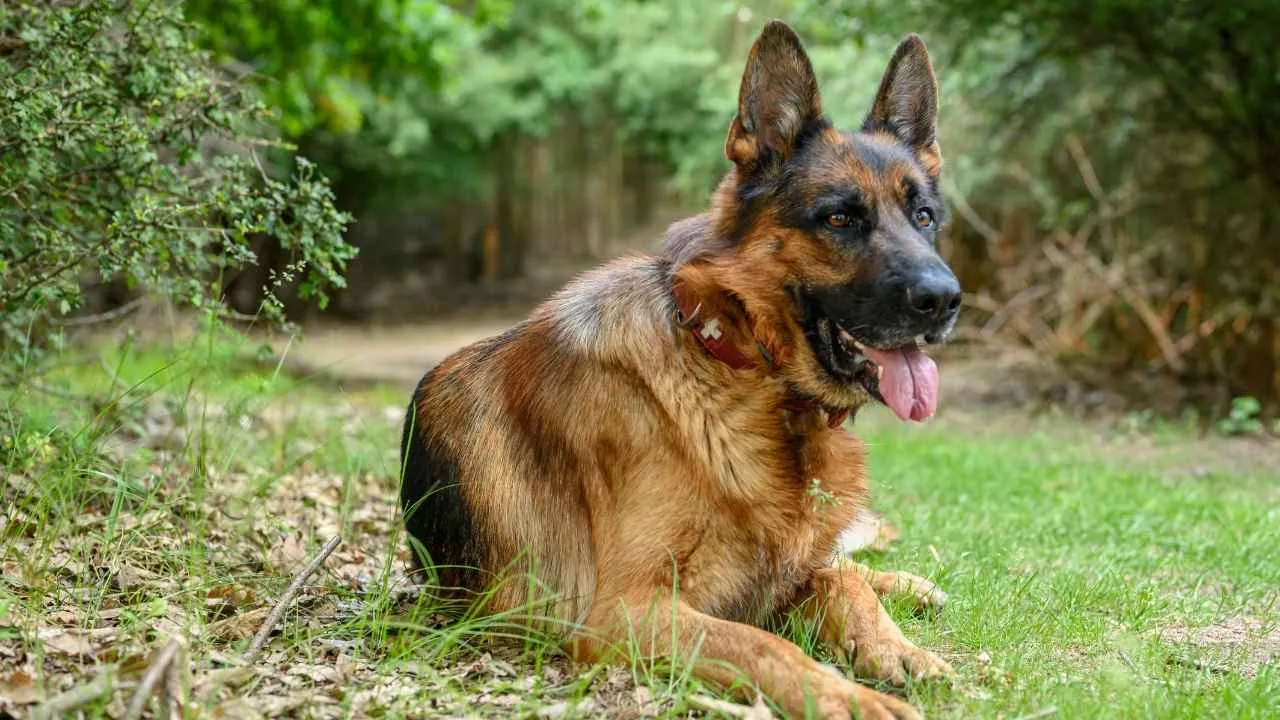
The German Shepherd is a large, athletic breed developed in Germany for herding and guarding livestock. Over time, it became a preferred working dog for military, police, and search-and-rescue services due to its versatility and intelligence.
This breed is naturally protective and forms close bonds with its family. German Shepherds tend to be alert and vocal, often barking when they sense unfamiliar movement or sound near their territory. Their watchful nature makes them reliable early detectors of people approaching the home.
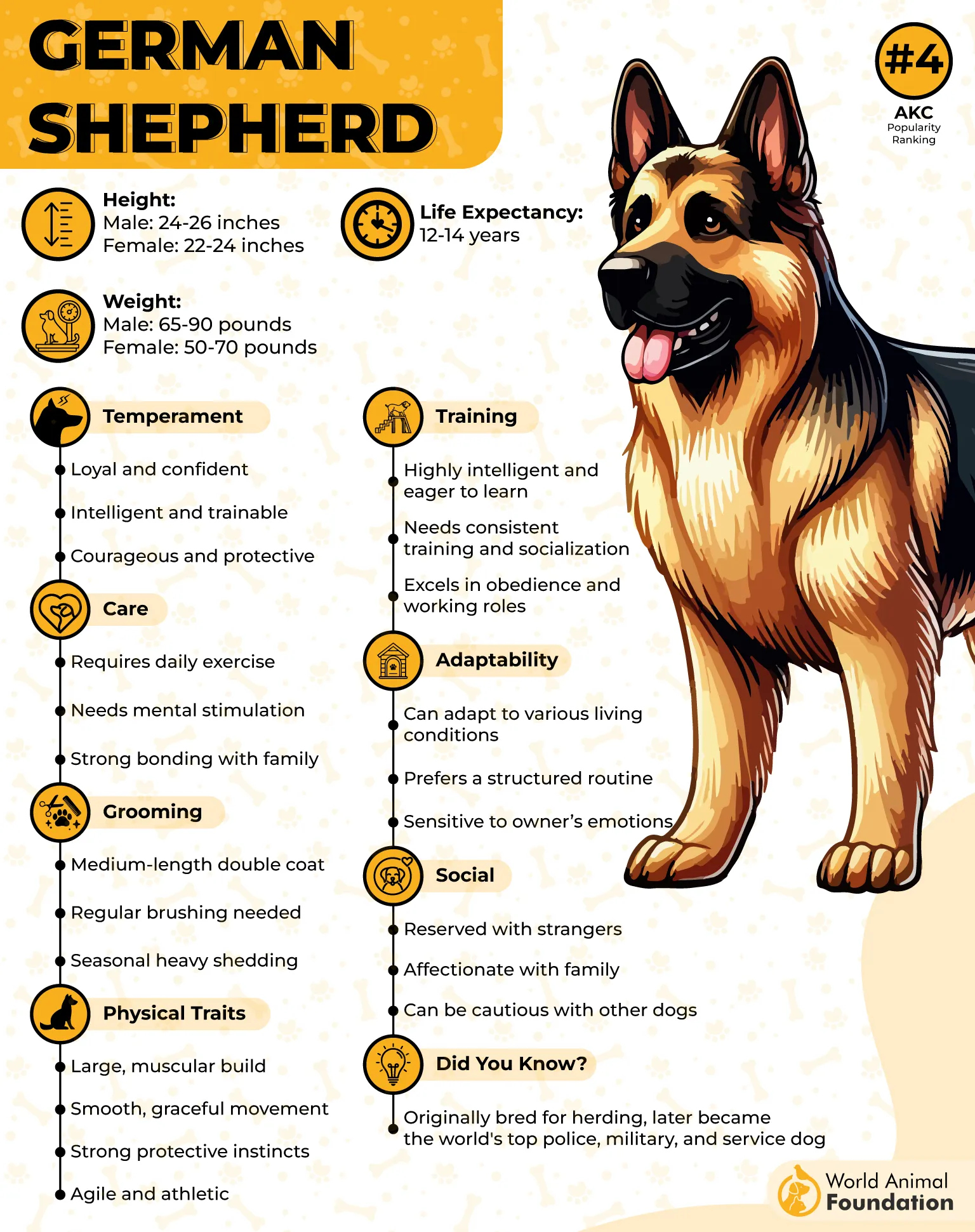
They generally do well with children, especially when raised with them and properly socialized. Early training is critical to ensure safe interactions, particularly with younger kids or new visitors.
As noted by PetMD, German Shepherds require consistent exercise and mental engagement to prevent destructive behaviors. They benefit from structured routines and excel in obedience, agility, and scent work.
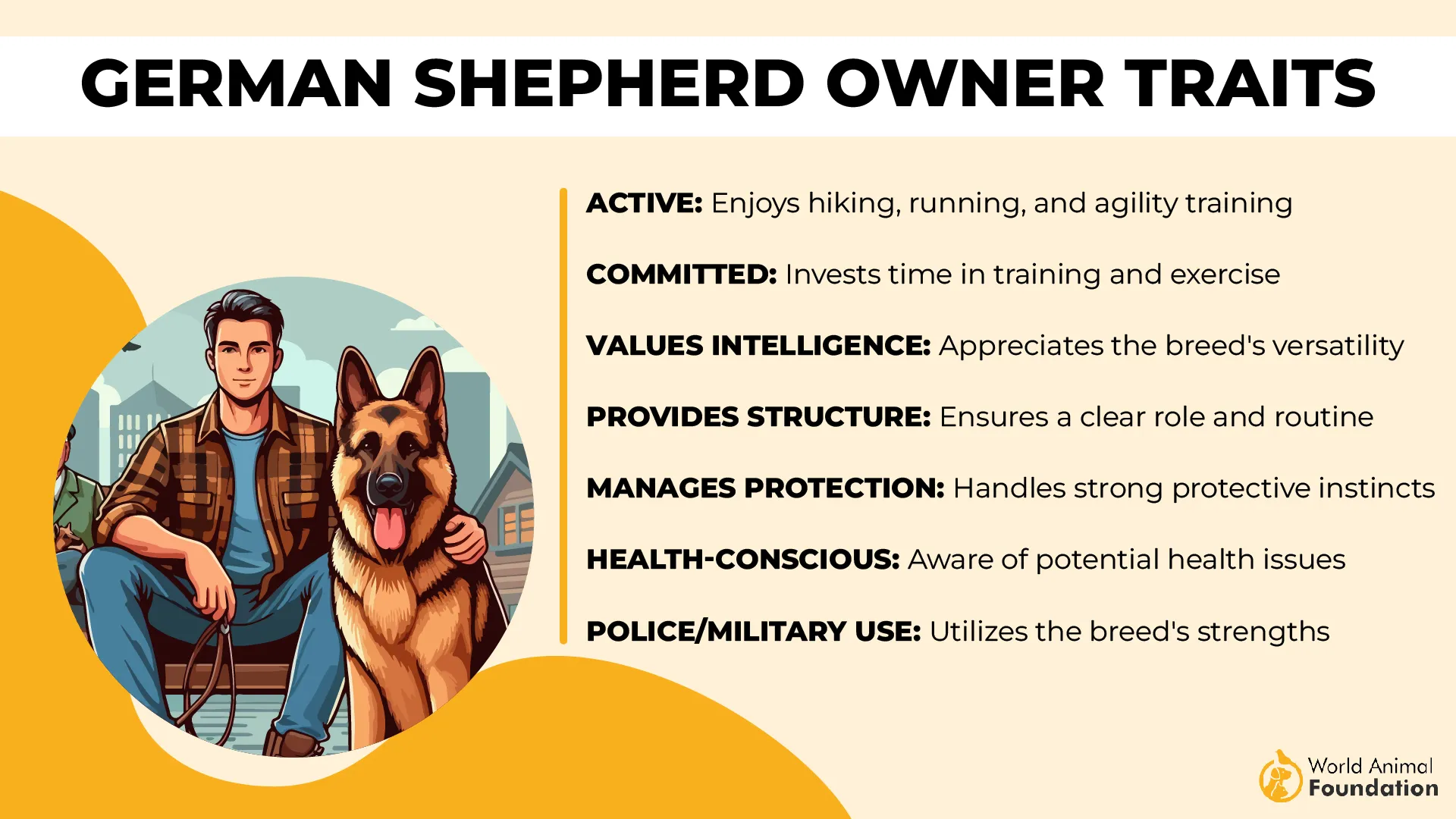
The double coat requires regular brushing to manage shedding and prevent matting, especially during seasonal transitions. German Shepherds are prone to hip and elbow dysplasia, so joint monitoring and appropriate diet are important for long-term health.
Quick Tips
Brush several times a week during shedding seasons
Incorporate training games to reinforce focus and impulse control
Use early socialization to manage overprotective behavior
2. Pomeranian
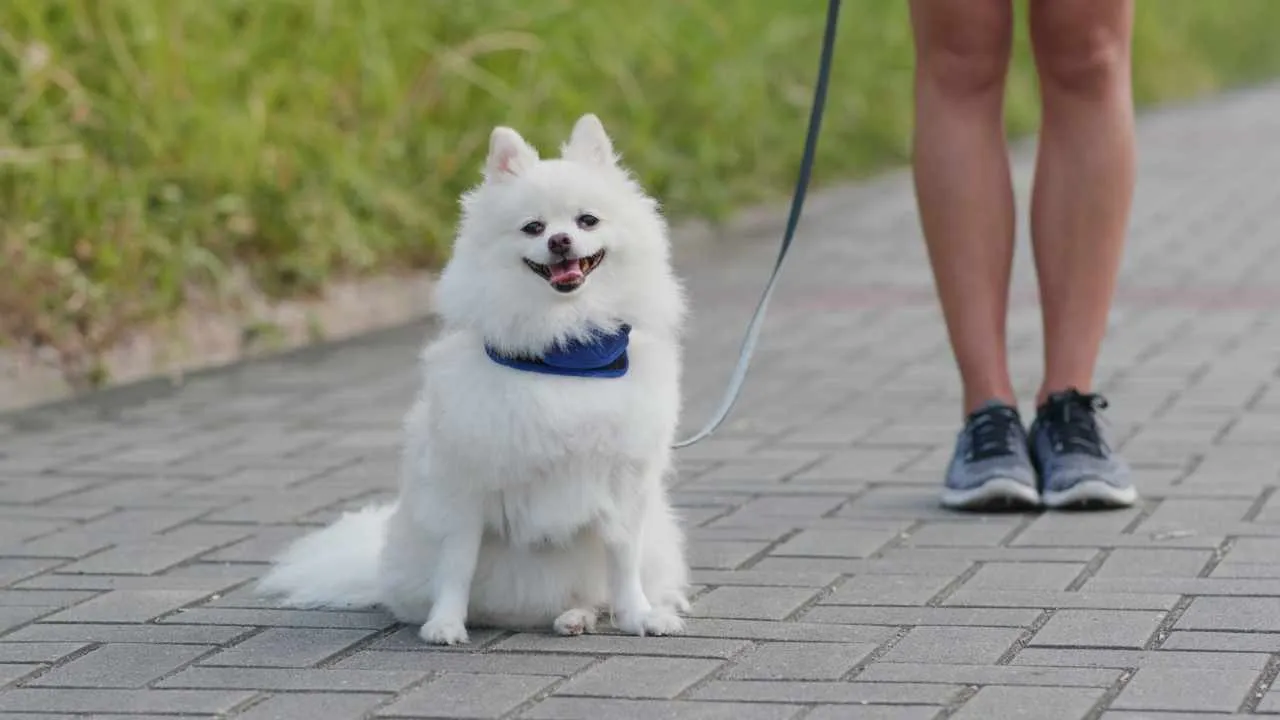
The Pomeranian is a small, energetic toy breed descended from larger sled dogs of the Arctic. It gained popularity in Europe in the 18th century and is now known for its bold personality and vibrant coat. Despite its size, it often displays confidence that rivals much bigger dogs.
Pomeranians are naturally alert and quick to vocalize, often barking at strangers, unfamiliar noises, or new activity near the home. Their lively temperament and desire to protect their space contribute to frequent barking behavior. As per WebMD, their alertness makes them ideal for homes looking for early noise-based warnings.
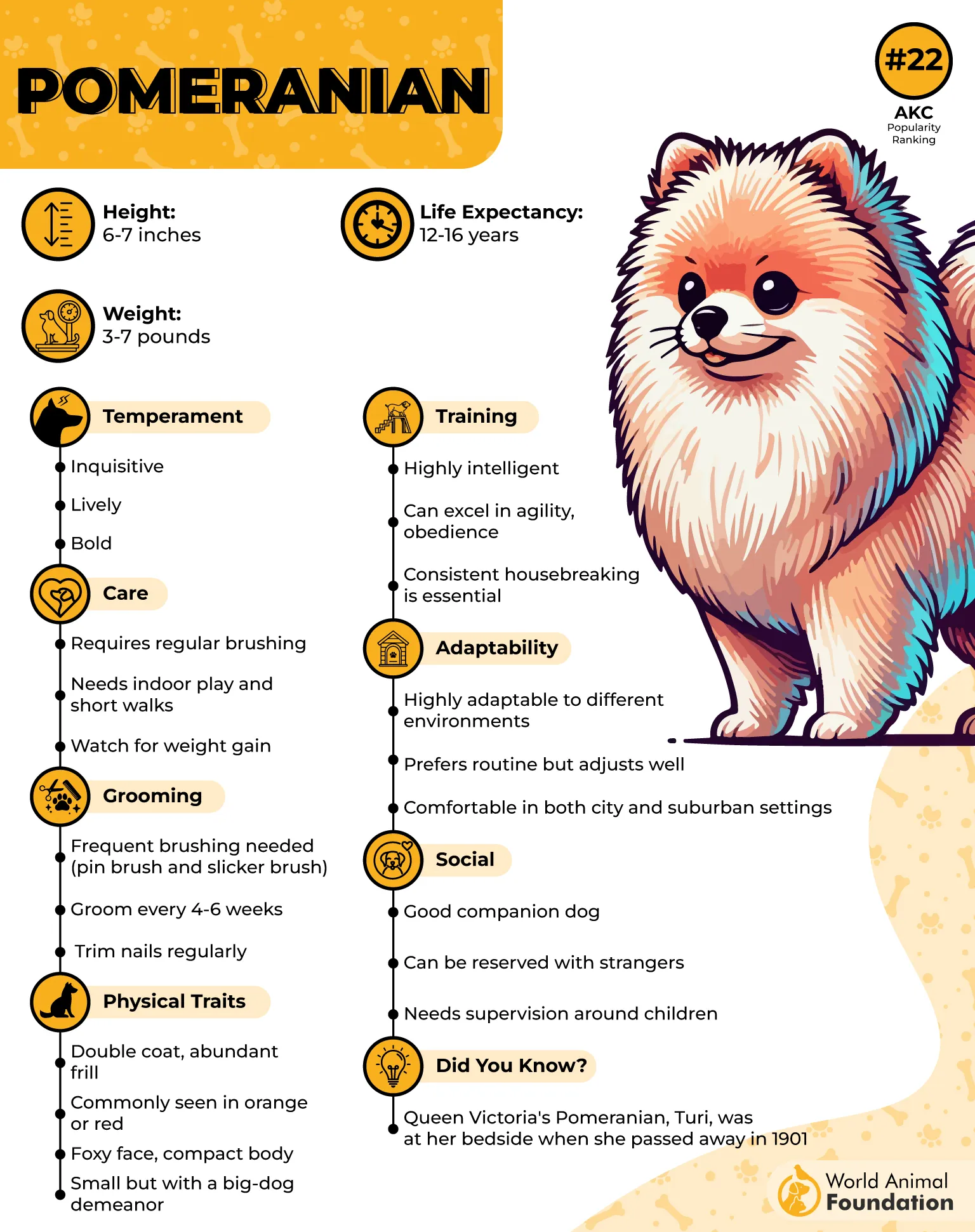
This breed typically does well with older children who understand how to handle small dogs gently. Due to its size and delicate frame, rough play should be avoided to prevent injury or stress.
Pomeranians require regular grooming to maintain their thick double coat. Brushing several times a week helps prevent mats and reduces shedding, especially around seasonal changes.
Though intelligent, Pomeranians can be stubborn. Positive reinforcement with treats and consistency helps shape behaviors and reduce unwanted barking. Early training and socialization are important to manage their assertive, vocal tendencies.
Quick Tips
Brush at least three times per week to control tangles
Avoid rough handling due to their small, delicate build
Use short, varied training sessions to maintain focus
3. Beagle

The Beagle is a medium-sized hound developed in England for tracking and hunting small game. It is known for its keen sense of smell, long history as a field dog, and friendly demeanor. Beagles are sociable and thrive in households that provide consistent companionship.
This breed is highly vocal and uses barking, baying, and howling to communicate. It often reacts to unfamiliar sounds, sights, or movement with a loud, distinctive bark. As suggested by Britannica, the Beagle’s hunting origins explain its persistence and strong vocal tendencies.
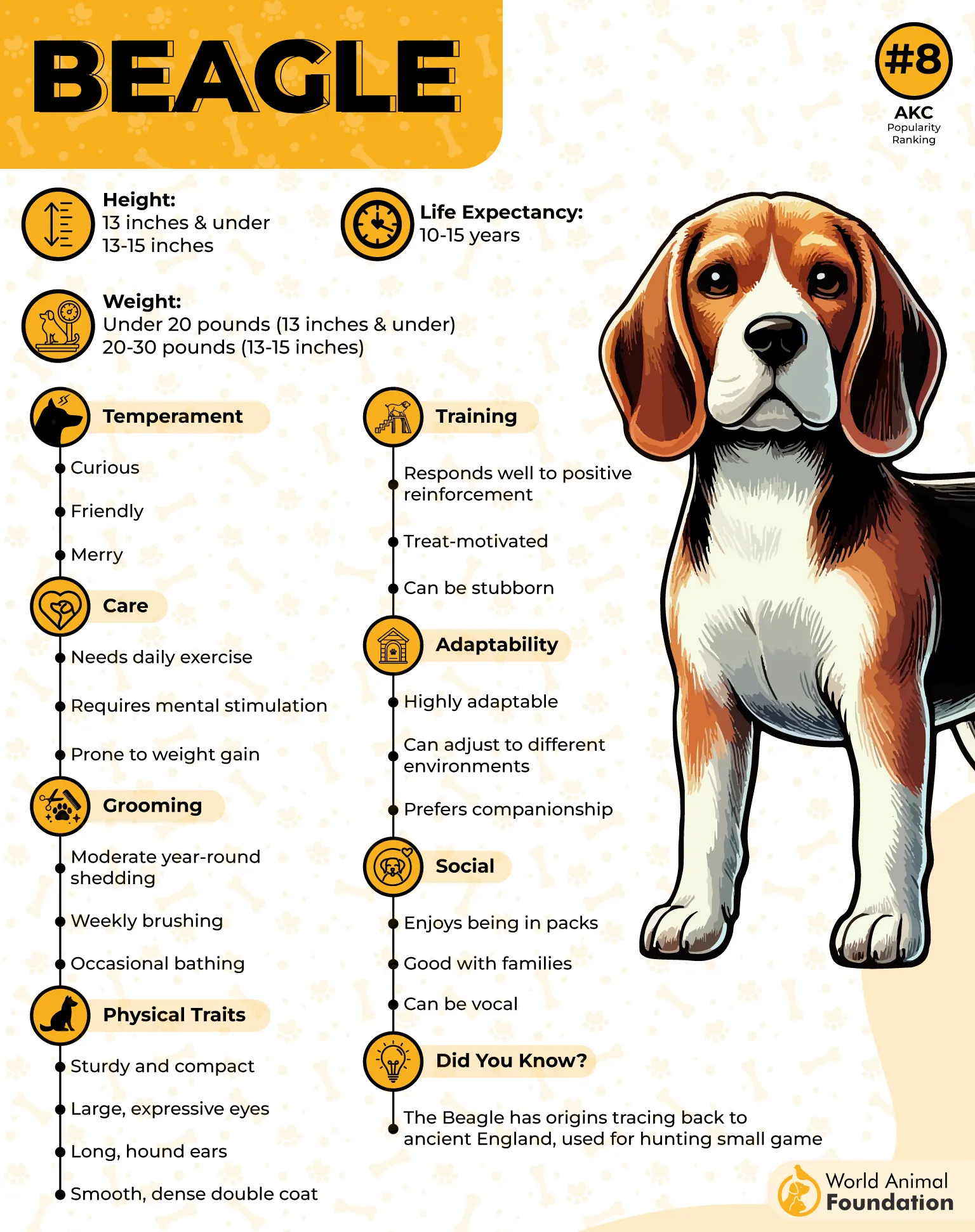
Beagles are typically good with children due to their gentle and playful nature. They enjoy interactive games and social settings, though supervision is recommended around younger kids to ensure respectful behavior on both sides.
Their short coat is low-maintenance but sheds consistently. Regular brushing helps control loose hair and keeps the coat healthy. Routine ear cleaning is also necessary, as their floppy ears are prone to infection.
Training a Beagle requires patience and creativity. While intelligent, they are easily distracted by scents and can be stubborn. Using food rewards, short sessions, and scent-based games improves engagement and learning outcomes.
Quick Tips
Use scent-based games to maintain interest during training
Brush weekly and clean ears regularly to prevent infection
Avoid long off-leash walks due to strong scent-driven instincts
4. Golden Retriever
The Golden Retriever is a medium to large sporting breed originally developed in Scotland for retrieving game during hunts. Known for its intelligence and friendly nature, it remains one of the most popular family dogs worldwide. This breed thrives on companionship and responds well to structure and praise.
While not typically aggressive, Golden Retrievers are vocal when alerting their owners to someone approaching the home. They may bark to signal unfamiliar activity, but are just as likely to greet guests with enthusiasm once they feel comfortable.
According to Hill’s Pet, their balanced temperament and people-pleasing drive make them easy to train and integrate into a family setting.
They do exceptionally well with children, showing patience and playfulness in home environments. Their gentle demeanor makes them reliable companions for kids of all ages.
The breed’s long coat requires regular grooming to prevent mats and manage shedding. Brushing a few times per week and occasional baths help keep the coat healthy and clean.
Golden Retrievers are eager learners and enjoy structured tasks like obedience, scent work, or fetch. They respond best to positive reinforcement and consistent routines that combine mental and physical activity.
Quick Tips
Brush frequently to maintain coat health and reduce shedding
Use fetch and retrieval games for both exercise and training
Supervise during alert barking to prevent overexcitement with guests
5. Siberian Husky
The Siberian Husky is a medium-sized working breed originally developed by the Chukchi people of northeastern Asia for sled pulling over long distances. It is known for its endurance, independence, and striking appearance. Huskies are social, energetic, and thrive in active households.
Though not traditionally guard dogs, Huskies are quick to vocalize when they detect movement or sound outside the home. They may howl or bark in response to unfamiliar visitors, especially when startled or stimulated. Their communication style includes a wide range of sounds beyond barking, such as yips, groans, and “talking.”
Huskies are generally good with children and enjoy group activity. Their playful and tolerant temperament makes them a good match for families, though their size and energy require supervision.
Their thick double coat needs frequent brushing, especially during seasonal shedding periods. Huskies are clean dogs by nature but require routine grooming to manage their dense fur and reduce odor.
They are intelligent but independent, often choosing when and how to respond. Training should include variety and positive reinforcement. Secure fencing is critical, as Huskies have a strong instinct to roam and explore.
Quick Tips
Use daily runs or hikes to meet high energy needs
Supervise interactions due to strong prey drive
Invest in secure fencing to prevent escape attempts
6. Rottweiler
The Rottweiler is a robust, confident working breed developed in Germany to drive cattle and guard property. It is known for its power, loyalty, and protective instincts, making it a popular choice for both family companionship and security roles. With proper training, it is calm, stable, and highly focused.
This breed tends to bark when it perceives a potential threat near the home, often standing alert near entry points or windows. Their instinct to guard is deeply ingrained, and they may vocalize quickly if they sense someone approaching. Rottweilers are dependable guardians with strong territorial awareness.
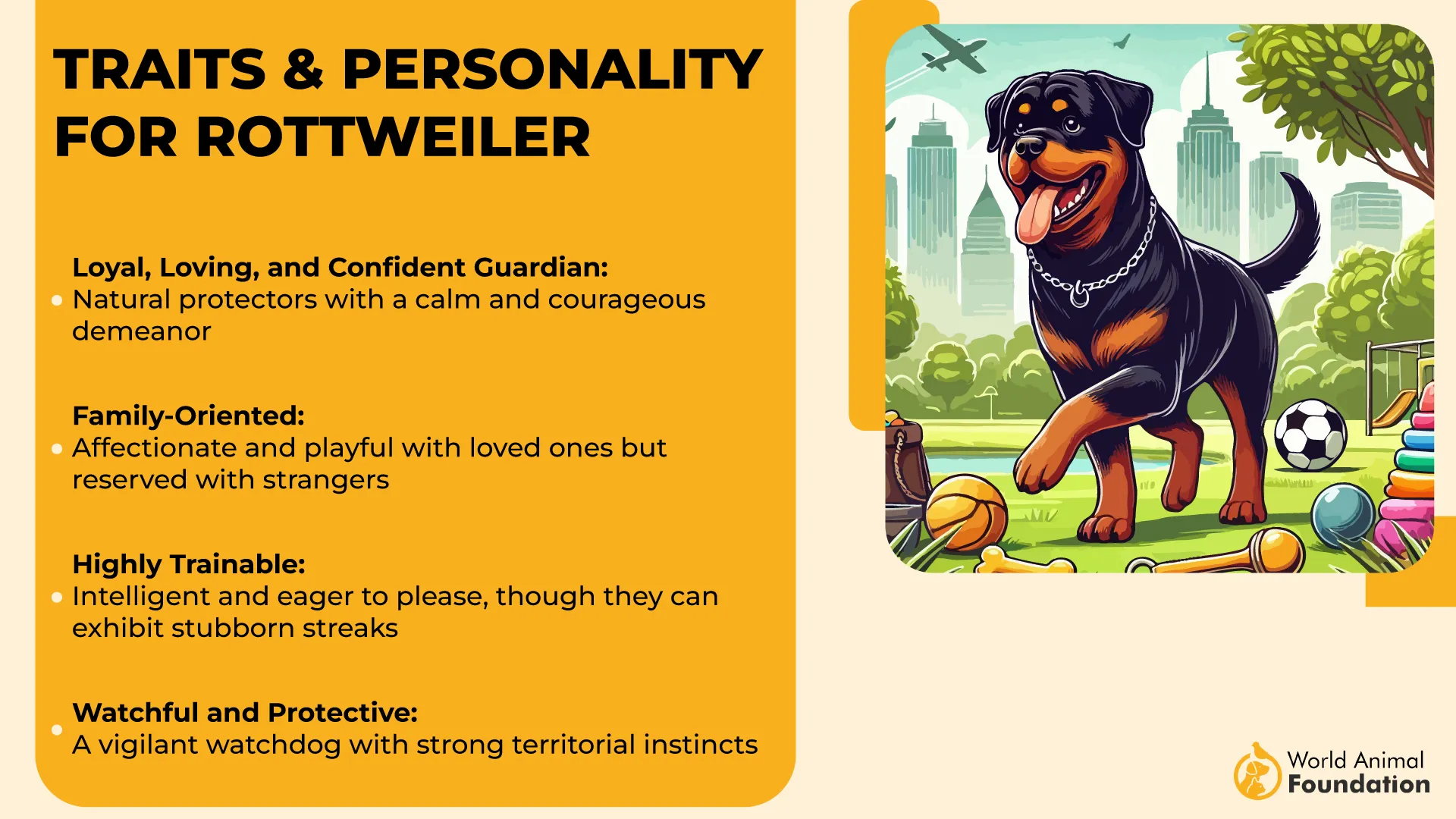
They generally do well with children in the household, especially when raised with them and consistently trained. However, due to their strength, supervision is important to maintain safe interactions with younger kids.
Their short double coat requires weekly brushing to control shedding and maintain skin health. Like many large breeds, they are prone to joint conditions such as hip dysplasia and benefit from regular veterinary care.
Rottweilers are intelligent and eager to work, responding best to confident, consistent leadership. Training should begin early and include socialization with people and other dogs to prevent over-guarding tendencies.
Quick Tips
Provide early socialization to balance protective instincts
Use firm, consistent training with positive reinforcement
Offer daily tasks or structured play to keep their mind engaged
7. Dachshund
The Dachshund is a small hound breed originally developed in Germany to hunt badgers and other burrowing animals. Recognized for its long body, short legs, and determined personality, the breed has become a popular companion dog. Despite its size, the Dachshund carries itself with confidence and alertness.
Known for being loud and expressive, Dachshunds often bark at unfamiliar noises or people approaching the home. Their background in hunting makes them quick to react to changes in their environment. As per the AKC, their strong instincts can lead them to be persistent barkers without proper training.
They usually bond well with older children who understand how to interact with small dogs respectfully. Supervision is recommended with younger kids due to their small size and tendency to guard toys or food.
Dachshunds come in smooth, long-haired, and wire-haired coat types, each requiring different grooming needs. Long-haired varieties need regular brushing to prevent tangles, while smooth coats require less frequent maintenance.
Though clever, they can be stubborn and independent. Positive reinforcement and consistency are key in training, especially when teaching commands to reduce unnecessary barking or chasing behavior.
Quick Tips
Use gentle handling to avoid back strain due to long spine
Prioritize recall and “quiet” commands in training
Rotate toys and puzzles to reduce boredom and vocalizing indoors
8. Basset Hound
The Basset Hound is a scent hound originally bred in France for tracking small game. It is recognized by its long ears, droopy eyes, and low-slung frame. Despite its relaxed appearance, this breed is alert and surprisingly vocal when stimulated by scents or activity around the home.
Basset Hounds are known for baying and barking when they detect something unfamiliar. Their deep, loud voice often surprises those unfamiliar with the breed’s vocal strength. Their vocalizations stem from their strong tracking instinct and their drive to communicate with humans and other dogs.
This breed is generally gentle and tolerant with children. While not overly playful, Basset Hounds enjoy affection and consistent companionship, making them a good fit for calmer households.
Their short, dense coat requires weekly brushing to reduce shedding and odor. Due to their long ears and low stature, they also need regular ear cleaning and checks for skin irritation.
Training a Basset Hound requires patience and persistence. While they are intelligent, their independent nature and scent distraction make recall and focus more difficult than with other breeds. Food-based rewards and short, focused sessions work best.
Quick Tips
Clean ears weekly to prevent infections
Reinforce recall early due to scent-driven distraction
Avoid overfeeding, as they are prone to weight gain
9. Alaskan Malamute
The Alaskan Malamute is a large, powerful working breed originally developed by the Inuit people for hauling heavy sleds across long distances. It is known for its strength, endurance, and thick double coat suited for cold climates. The breed is highly social and prefers to be part of a household pack.
While not typically barkers, Malamutes are known for their expressive vocalizations, including howls, “talking,” and warbling sounds. They often vocalize in response to outside movement or unfamiliar sounds, and can be quick to react when someone is approaching. Their social nature and alertness make them attentive companions when properly trained.
Malamutes are affectionate with children but can be overwhelming in size and energy for very small kids. Early socialization is essential to build safe and respectful interactions.
Grooming needs are significant, especially during heavy shedding seasons. Regular brushing and bathing help manage their dense coat and keep skin healthy.
Training a Malamute requires consistency and strong leadership. They are intelligent but independent, often testing boundaries. Focus on early leash training and impulse control to prevent pulling and roaming.
Quick Tips
Provide high-intensity exercise to manage energy
Brush daily during shedding months to prevent matting
Use long lead training to reinforce boundaries in open spaces
10. Yorkshire Terrier
The Yorkshire Terrier is a small, spirited toy breed that originated in England during the 19th century as a ratter in textile mills. Over time, it evolved into a popular companion breed, known for its elegance, bold personality, and affectionate nature. Despite its size, it carries itself with surprising confidence.
Yorkies are highly alert and often quick to bark at unfamiliar sights or sounds near the home. They’re particularly sensitive to subtle vibrations or environmental shifts, which may explain their reputation for barking before certain events. This breed is naturally vocal and attentive to their surroundings.
They tend to form close bonds with one or two people and may act possessive, especially around strangers. With proper training, they can coexist well with children, although supervision is needed to prevent accidental rough handling.
Their long, silky coat requires daily brushing and regular trimming to prevent tangling. While low-shedding, they need consistent grooming to maintain coat and skin health.
Training a Yorkie should focus on patience and clear, positive reinforcement. They are intelligent but may be stubborn if overindulged or not given structure.
Quick Tips
Brush and detangle coat daily to prevent mats
Use early crate and noise desensitization to reduce barking
Supervise around larger pets to avoid injury or fear responses
Conclusion
Dogs bark for many reasons, but certain breeds seem almost prepared for every knock, step, or sound that comes near their home. Whether it’s a bright and curious puppy reacting to footsteps on the floor or a mellow senior dog choosing when to speak, these reactions are more than just noise — they’re signals of loyalty, awareness, and love.
While excessive barking can become a challenge, it often starts with a simple reason: the dog wants to alert, protect, or get attention. From Chihuahuas to larger breeds, these barkers don’t wait for someone to sit or open the door — they hear everything before it happens. Some even begin catching signs long before you notice.
Each dog has its own story, and with the right training, even vocal dogs can learn to follow commands and adjust to a situation. It may be harder with some breeds, but with plenty of patience and a bit of structure, progress comes faster than you might think. If you’re looking to find a companion who’ll always let you know what’s coming, this article has hopefully offered the insight you need — and maybe even helped you fall for a new, cute, and loyal best friend.


